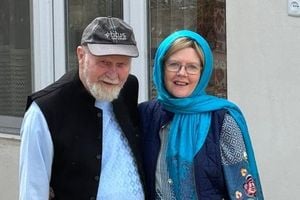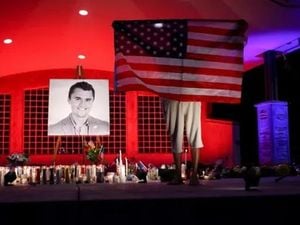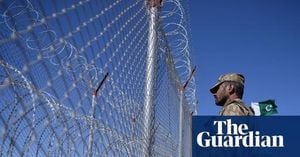When Hurricane Helene made its way toward the U.S. East Coast, it brought not just winds and rains but also waves of bewilderment and conspiracy theories. The storm, which was initially expected to veer northward and spare landfall, intensified scrutiny among scientists and meteorologists about the nature of storm tracking and emergency responses. Public discussions oscillated from earnest concerns about preparedness to wild conspiracy theories about government manipulations.
Hurricane Helene evolved from a tropical storm to a Category 3 hurricane by the time it reached the mid-Atlantic. While heavy rains and winds were expected, the storm’s course became the subject of social media scrutiny and conspiracy-laden discussions. Some theorists began speculating about whether the hurricane was being controlled or manipulated for ulterior purposes. These theories, fueled by misinformation, spread like wildfire across social media platforms.
“I'm seeing all these posts online claiming the government is somehow controlling or altering the path of the hurricane,” noted meteorologist Laura Henderson. “While it might seem like tantalizing fodder for conspiracy enthusiasts, it’s important to understand how these storms actually work.” Henderson pointed out the unpredictability of hurricanes, which can alter their paths based on shifting atmospheric conditions and ocean temperatures.
The Federal Emergency Management Agency (FEMA) was quick to respond to these heightened concerns. Their usual protocol involves preparing communities with emergency preparedness plans and evacuation orders when necessary. “Our first priority is always saving lives and ensuring the safety of affected communities,” said FEMA spokesperson Jen Lewis. This response included ensuring resources such as food, water, and shelter were readily available for those who might be affected by the storm.
Interestingly, the social media narrative surrounding Helene included posts and videos claiming the hurricane was being weaponized, with some even referencing HAARP—a program associated by some with weather manipulation theories. “While HAARP gets brought up often, it has absolutely nothing to do with hurricanes or any individual storm,” said Dr. Ted Miller, an atmospheric scientist. “It’s easy for misinformation to flourish during natural disasters, where fear and uncertainty can lead people to seek any explanation, even if it's fundamentally untrue.”
The situation surrounding Hurricane Helene is part of a larger trend where natural disasters bring out conspiratorial thinking. Cognitive scientists suggest this may stem from the innate human desire to make sense of chaotic situations, especially when traditional sources of information may appear flawed or insufficient. Understanding this phenomenon is key for engaging with affected communities to provide accurate information.
Citizens who found themselves situated along the potential path of the hurricane were flooded with information—some reliable, but much of it speculative at best. For longtime residents, the balance between prudent preparation and undue panic became more challenging with the influx of non-factual content. “We do our best to sift through the noise on social media,” stated local resident Mark Williams. “But it can feel overwhelming at times, especially when you have family and friends asking you if they should pack up and leave the state.”
Various platforms like Twitter, Facebook, and TikTok became hotbeds for both information dissemination and misinformation. The impulse to share has increasingly blurred the lines between fact and fantasy, prompting government officials to work actively against these trends by ramping up their own information campaigns. Local emergency management offices issued clear, frequent updates through traditional media outlets, as well as online to tackle misinformation head-on.
Compounding the rapid spread of conspiracy theories, some messages took on darker tones, implying nefarious government agendas. Such claims often gained traction during natural disasters, wherein real fears and uncertainties led individuals to distrust official narratives. “It’s really disappointing to see communities torn apart by fear-based narratives when we should be coming together during crises,” remarked sociologist Dr. Kim Tran.
Authorities have learned from past experiences, like Hurricane Sandy, where social media misinformation had real consequences. This time around, FEMA is implementing social media tracking to identify and counteract viral misinformation campaigns quickly. Their goal is to dismantle frivolous claims before they can harm public trust or safety.
Moving forward, experts implore the public to practice discernment and seek verified information from trusted sources during hurricanes and other natural disasters. This is particularly important as the frequency of severe weather events grows with climate change. “When faced with disaster, our focus should not only be on what can be done to prepare but also on how we can nurture resilient communities resilient against not just storms, but also the social storms of misinformation,” concluded Dr. Angela Choi, a leading expert on social dynamics during crises.
Though Hurricane Helene eventually made landfall with less impact than initially feared, it still served as both a meteorological and sociological case study. The moment may just be another signal—a reminder—that misinformation during crises remains rampant, but with targeted information-sharing strategies and community engagement, news can spread more transparently and truthfully.



